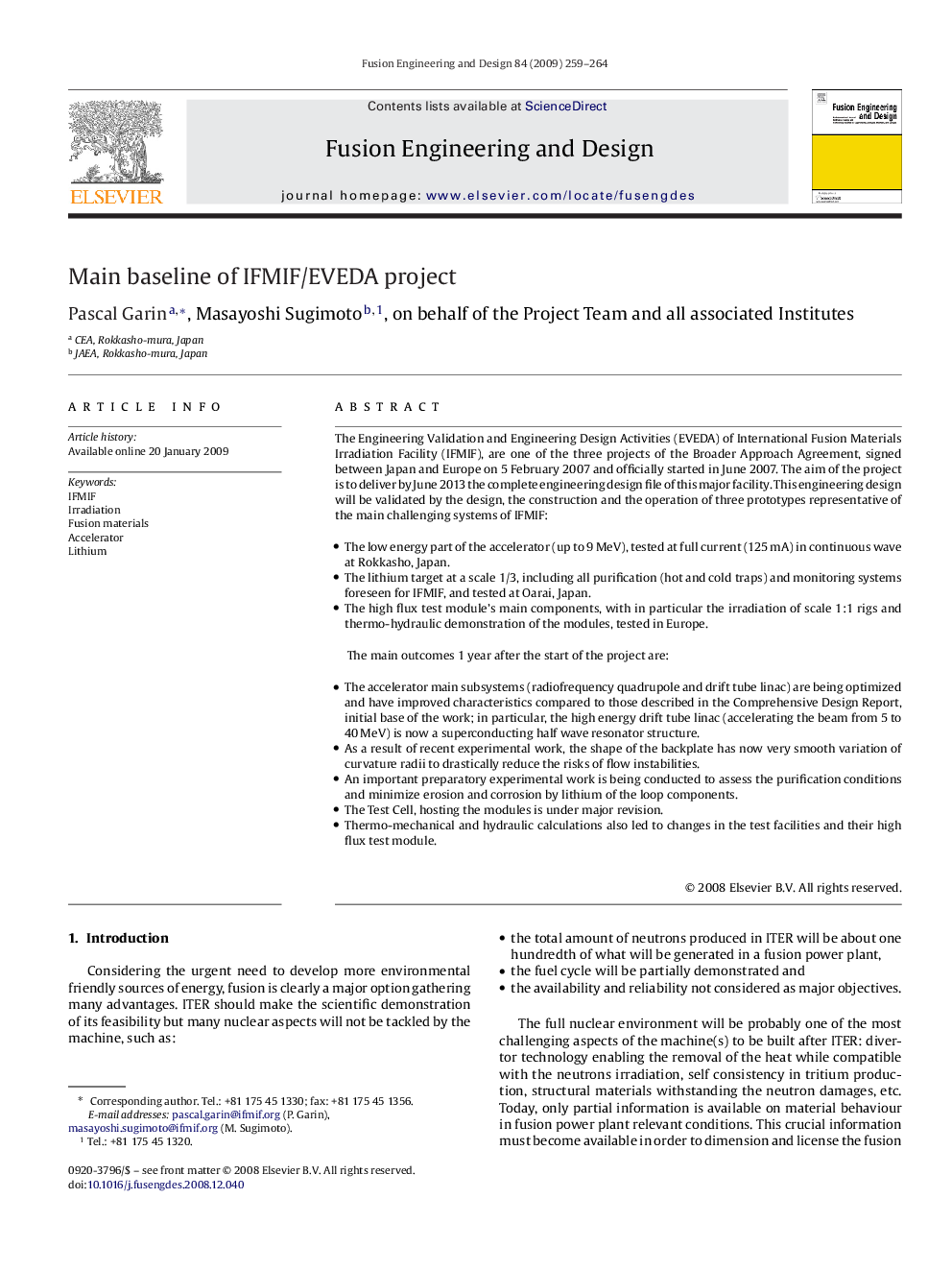| کد مقاله | کد نشریه | سال انتشار | مقاله انگلیسی | نسخه تمام متن |
|---|---|---|---|---|
| 273348 | 505044 | 2009 | 6 صفحه PDF | دانلود رایگان |

The Engineering Validation and Engineering Design Activities (EVEDA) of International Fusion Materials Irradiation Facility (IFMIF), are one of the three projects of the Broader Approach Agreement, signed between Japan and Europe on 5 February 2007 and officially started in June 2007. The aim of the project is to deliver by June 2013 the complete engineering design file of this major facility. This engineering design will be validated by the design, the construction and the operation of three prototypes representative of the main challenging systems of IFMIF:
• The low energy part of the accelerator (up to 9 MeV), tested at full current (125 mA) in continuous wave at Rokkasho, Japan.
• The lithium target at a scale 1/3, including all purification (hot and cold traps) and monitoring systems foreseen for IFMIF, and tested at Oarai, Japan.
• The high flux test module's main components, with in particular the irradiation of scale 1:1 rigs and thermo-hydraulic demonstration of the modules, tested in Europe.The main outcomes 1 year after the start of the project are:
• The accelerator main subsystems (radiofrequency quadrupole and drift tube linac) are being optimized and have improved characteristics compared to those described in the Comprehensive Design Report, initial base of the work; in particular, the high energy drift tube linac (accelerating the beam from 5 to 40 MeV) is now a superconducting half wave resonator structure.
• As a result of recent experimental work, the shape of the backplate has now very smooth variation of curvature radii to drastically reduce the risks of flow instabilities.
• An important preparatory experimental work is being conducted to assess the purification conditions and minimize erosion and corrosion by lithium of the loop components.
• The Test Cell, hosting the modules is under major revision.
• Thermo-mechanical and hydraulic calculations also led to changes in the test facilities and their high flux test module.
Journal: Fusion Engineering and Design - Volume 84, Issues 2–6, June 2009, Pages 259–264